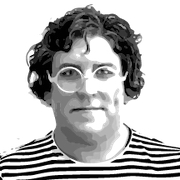Notes
-
🔖 Lukas Koster and Saskia Woutersen-Windhouwer, "FAIR Principles for Library, Archive and Museum Collections: A proposal for standards for reusable collections" –
We deem it necessary for collections to be FAIR. When collections do not meet the FAIR criteria, these collections will be harder to use by teachers, researchers and enterprises. Collections that will not be FAIR will run the risk of being out of the picture, as will in the long term their institution. The objective of this article is to provide a compact, and practical list of guidelines for achieving reusability of LAM collections that can be fairly easily applied by LAM institutions according to their own roadmaps and resources
-
🔖 Karen Gregory - DATA AND MAGICK: ALEATORY TECHNOLOGIES –
While it is true that cards “speak” through the symbols or signs that they carry, we can also look to what cards can “do” or what can be “done with” cards, and we can see that a card is not entirely meaningless outside of a semiotic context. Cards, most basically, can be flipped. They can also be used, as Ian Hacking (1988) has shown, as agents of randomization, and simple playing cards were not only employed in the history of the search for telepathy, but cards as an “organizational system” (Hayles 2005, Chun 2005) played an important role in the history of computing, making possible serial functions and memory.
-
🔖 Peter Molnar - The internet that took over the Internet –
The Internet is still present, but it’s shrinking. Content people really care about, customised looking homepages, carefully curated photo galleries are all diminishing. It would be fantastic to return to a world of personal websites, but that needs the love and work that used to be put into them, just like 20 years ago.
At this point in time, most people don’t seem to relate to their online content. It’s expendable. We need to make them care about it, and simpler tooling, on it’s own, will not help with the lack of emotional connection.
-
just testing again…
-
testing a Workflow/Working Copy note posting workflow on my iPad
